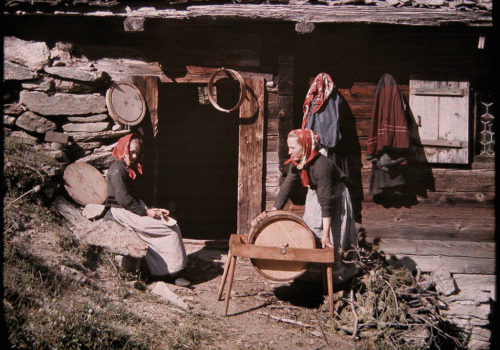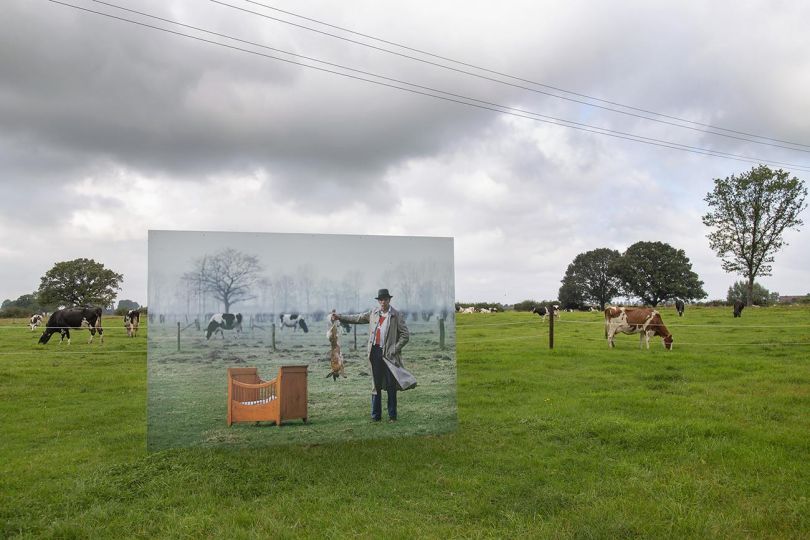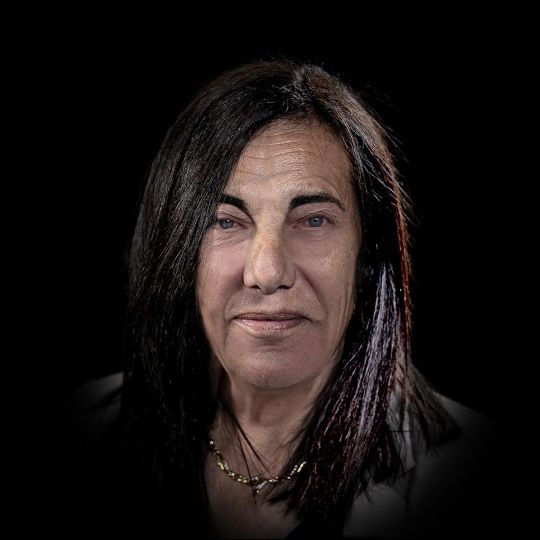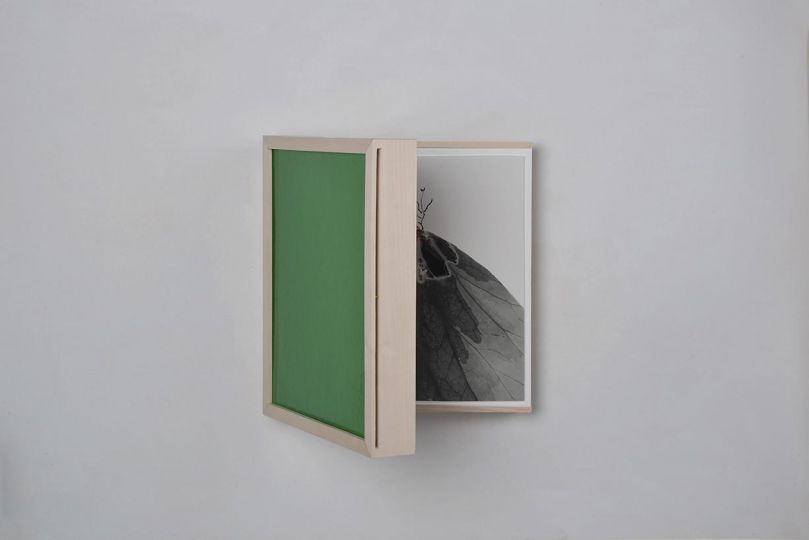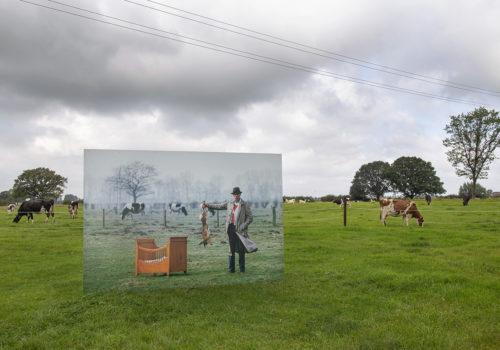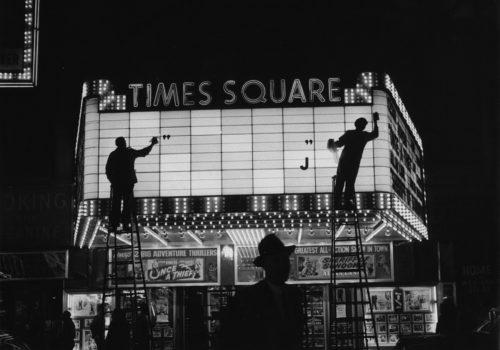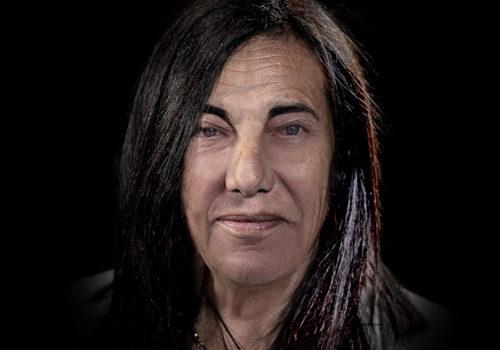The Musée Gruérien is showing 300 autochromes made in Switzerland, drawn from an inventory of 5,000.
An ambitious publication documents the process.
It is a prophesy written by Alfred Stieglitz in the journal Photography in 1907: “Soon the world will be mad with colour and Lumière will be responsible”. This has become the title of a new exhibition at the Musée Gruérien in Bulle dedicated to the autochromes of Switzerland, the first colour photographs of the country. 1907 is the year when the Lumière brothers introduce and industrialise their process, The first to render the world in colour on a grand scale.
As a prelude, the exhibition playfully shows the principles of the autochrome and photosensitivity. A glass filter studded with red, green and blue dots captures the rays of light. The feat of the Lumière brothers? Succeeding in packing 6,000 to 7,000 grains of potato starch dyed with these colours into one square millimetre, without overlapping. The autochrome works according to the theory of the additive synthesis of colour: more than just colours, there is also white, which happens, more or less, in the opposite way to mixing paint. 1907 promises to freeze the world in “natural colour”, and it’s a revolution.
In 2002 the museum of Bulle receives the collection of Simon Glasson: a million images of which 242 are autochromes. A colossal task led by Nicolas Crispini, photographic historian, and Christophe Dutoit, editorial director of Regards retrouvés, the photographic collections of Fribourg, resulted in an inventory of some 5,000 autochromes made in Switzerland, of which one was discovered at MoMA in New York and many in Paris. A small part of this collection about 300 images, is being shown today published in a remarkable scientific book.
The other great supplier is the Musée départemental Albert Kahn, in Boulogne-Billancourt (LT from 20th May 2015). At the beginning of the 20th century, Albert Kahn, the son of an Alsace livestock dealer, a philanthropic banker exiled in Paris, had a premonition that the war would disrupt the planet for good. He is concerned and decide to freeze the world before it disappears convinced that a better knowledge between the peoples would be a source of peace, he sends twenty photographers and cinematographers on missions across the continents. From these “Archives of the Planet” have resulted a collection of more that 72,000 autochromes, one of the two great collections in the world with that of National Gepgraphic, of which 1,600 are of Switzerland. Seven missions are organised between 1911 and 1925. Inevitably they concentrate on the exotic side of Swiss life: the community of Uri, cowherds and pretty shepherdesses, as well as on the activities of the League of Nations in Geneva.
For the rest, the majority of autochromists are dilletantes. “The autochrome remained an amateur process”, said Nicolas Crispini. “The lack of appearance in the press because of the cost of reproduction more than the technical constraints (notably 8 baths and 7 rinses are necessary). And a sort of chromophobia, associating colour photography with vulgarity. It was necessary to wait until the 1980s and people like Eggleston for colour to become the reference and for black and white to be all washed up”. The historian, however, evokes a “bomb” in the visual domain, recalling the words of Matisse, “With colour photography, one can never do anything the same as before”.
Caroline Stevan, « Le Temps ».
EXHIBITION
Mad Color
Autochromes, the first color photographs of Switzerland (1907-1938)
From September 26th, 2015 to January 10th, 2016
Musée gruérien
Rue de la Condémine 25
1630 Bulle
Switzerland
http://www.musee-gruerien.ch
BOOK
Mad Color
Autochromes, the first color photographs of Switzerland (1907-1938)
Editions Alphil
216 pages
49 francs, 36€, 52$
ISBN:978-2-88930-045-7
http://www.alphil.com

